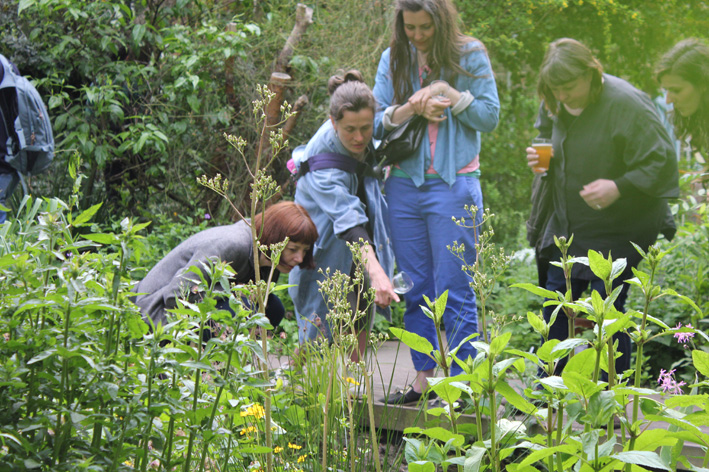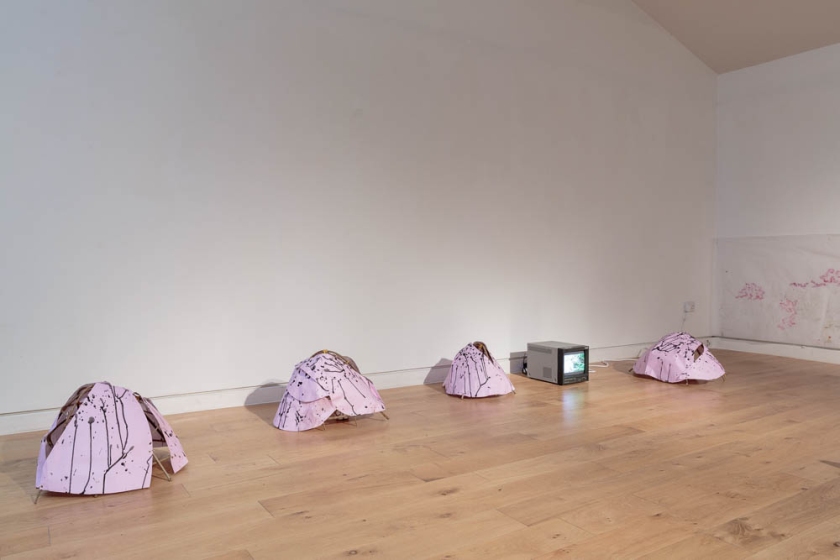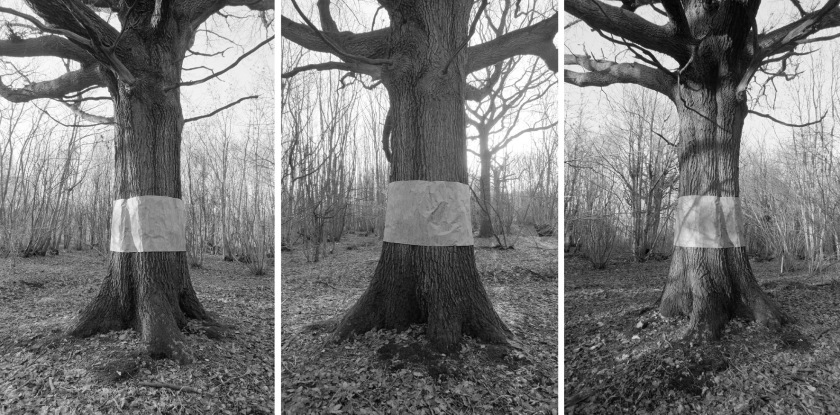Devised in collaboration with artist Marcus Coates, Ask the Wood was an event held at South London Botanical Institute, where we invited an audience to bring deep-rooted personal questions and thorny problems to be deliberated and fathomed via the wisdom of the woods. We enlisted the help of an esteemed panel of naturalists – forest scientist Gabriel Hemery, fungi and orchid specialist Irene Palmer, urban ecologist Mathew Frith and plant folklorist Roy Vickery.

Subverting a ‘Gardeners Question Time’ format, Ask the Wood looked at strategies and relationships that have evolved between species in woodlands to provide new frameworks for approaching questions concerned with human society. The panel drew on their specialist knowledge of the intricate relationships that have evolved in nature to open up unexpected pathways of creative thinking for everyday life.
I received several questions by email before the event, which I have sent answers to – here are a few of these, to give a flavour of our results. There is an audio recording of the event, perhaps the makings of a radio show…
I am ordinarily loath to place myself in the position of ‘She who knows’, but with the Woods at my back I felt I had special powers (i.e. much to offer as a conduit).

A Few Questions and Answers
‘In our small church newcomers are often met with bullying from two elder ladies who are deeply resistant to change. They are both church wardens. The vicar’s response is not to rock the boat, but their behaviour is pushing people away. Should the newcomers make an official complaint or collude with the vicar and allow it to continue?’
Your question is quite complex and provoked a number of responses rather than one simple answer.
The matriarchs of a troop or herd would normally aim to nurture the new generation. Clearly your female elders perceive you as intruders, or upstarts, as getting out of line, and are defending their territory/status aggressively. The alpha male (vicar) can fight other males but may still be put in his place by an alpha female.
Is this territory something you want to claim for yourselves? In which case you may have to fight for it. This can be through direct confrontation, or via subterfuge and cunning. Subordinate females get on the right side of dominant ones by bringing gifts, making themselves useful, grooming, looking after babies etc to increase their relative status in the group.
Alternatively, you would take the patient view of the plant kingdom, and play the waiting game. At some point the dominant tree will fall and cast light on the waiting saplings…
Or, you might decide that other territories look more inviting, and less trouble.
‘What is the best way of dealing with anxiety?’
Your question regarding anxiety is tricky, as we need to be careful not to under-estimate it (in case talking to a doctor is more appropriate).
But the wood did come up with a couple of things that may be useful.
Trees in woods use their networks all the time – they are continually feeding into and taking from the underground root/fungal network. 20-80% of a tree’s sugars will be sent into the fungal network, both to feed others and /or to save up for time of need – it is like a combination of family / friendship reciprocity, and an insurance policy against dark times. So the woods’ advice would be nurture your connections to your intimate networks, helping and being helped by them.
My own added inflection on your question was to critically look at how the mycorrhizal network is often seen as a metaphor for the internet. I think this is a potentially damaging metaphor, particularly in this context of anxiety. We are speaking here about beings in local proximity with physical connection.
‘How can two people start to really see each other after 25 years of possibly seeing past each other?’
Birds who mate monogamously enact mating rituals on reacquaintance, which they expend considerable effort and time on. So – make rituals of grooming and love-making with your partner, and… spend the winter apart!
‘How can we build and support human collectivity and interdependence?’
The way of the wood would be to share what you can offer with those in need of it, on the basis of asymmetric reciprocity. Trees and mycorrhizal networks continually feed each other, according to who needs what, and when. Different nutrients are continually being passed back and forth under the soil. This encourages an interconnected ‘we not me’ approach to survival and flourishing in times of plenty and scarcity.
From an animal perspective: form a strong herd, claiming and sharing territory together.



























